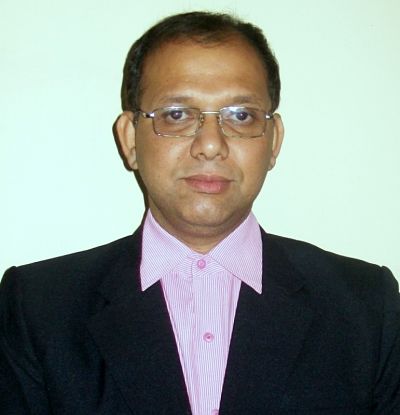Hydrogen: An Energy Vector Towards Sustainable Resilience
Written by Kumari Sandhya, Akula Sathvick and Kalya Chatterjee
Modern distribution systems are addressing major challenges of pandemic, climatic and technical changes. Resilience can help systems emerge stronger by boosting their self-healing capabilities. This can be achieved by strategically dispatching mobile energy sources along with other distributed generation sources. Therefore, over the past years momentum behind hydrogen as an energy carrier has increased dramatically. Hydrogen energy is highly efficient as it has the capability to be stored and transported. Hydrogen energy is about three times efficient than gasoline so it can be harnessed for systems as large as a utility power station.
Also, hydrogen can help achieve a clean, secure and affordable energy future. Therefore, the overall resilience of systems can be subsequently augmented by employing multi-carrier energy hubs including hydrogen energy. A step towards the conceptual framework for large scale deployment of hydrogen energy is needed for harmonizing hydrogen with other renewable sources for sustainable resilience of distribution systems.
Smart Hydrogen Application in the Transportation Sector
Hydrogen energy catalyzes eco-friendly economic developments within distribution systems via zero carbon emission. Therefore, hydrogen-coupled resilient distribution systems focus on increased electrification from renewable and low carbon generation sources empowering the whole grid, as seen in Figure 1.
Figure 1: Hydrogen Coupled Resilient Generation System [1].
Application of Hydrogen Energy in Resilient Distribution System
Hydrogen energy can be used as a source of sustainable and resilient power in the distribution system in various ways:
- Fuel Cells: Hydrogen fuel cells can provide a reliable source of power for critical infrastructure during times of electrical grid failure or other emergencies.
- Energy Storage: Hydrogen can be stored and used as a source of energy when demand is high, or when the main power source is unavailable. This helps to maintain the stability of the power grid.
- Transportation: Hydrogen fuel cell vehicles can serve as mobile power sources in emergency situations, providing electricity to support relief efforts.
- Microgrids: Hydrogen can be used in microgrids, which are independent power systems that can operate even when the main power grid is down.
By utilizing hydrogen energy in these ways, a resilient distribution system can be established that is less susceptible to failure, and can continue to provide essential services even in the event of a power outage, extreme events and pandemic.
Unprecedented Momentum for Hydrogen
In recent years, there has been growing interest and investment in hydrogen energy as a clean and renewable source of energy. This is due to its potential to reduce greenhouse gas emissions and increase energy security. The development of new technologies such as hydrogen fuel cells and the increasing demand for clean energy have led to the growth of the hydrogen industry and the recognition of its potential as a key player in the transition to a low-carbon economy. This is the reason that there is a surge for the use of hydrogen across the world for different applications in the energy mixes to achieve their decarbonization goals. This can be seen from Figure 2 where until November 2021, the rise in hydrogen energy across the world has been depicted.
Figure 2: Clean Hydrogen across the world as of November 2021[2].
Difficulties of Hydrogen for Achieving Sustainable and Resilient Energy
There are several challenges that need to be addressed for the widespread adoption of hydrogen energy [3]. The difficulties include:
- Cost: The production of hydrogen is currently expensive and requires a significant amount of energy.
- Infrastructure: There is currently a limited infrastructure for hydrogen storage, transport, and distribution.
- Production methods: The majority of hydrogen is produced from fossil fuels, which defeats its purpose as a clean energy source.
- Safety: Hydrogen is highly flammable and must be handled and stored properly to ensure safety.
- Public perception: There is a need for education and public awareness about the benefits and safety of hydrogen energy.
- Regulation: The lack of a clear and consistent regulatory framework for hydrogen energy is hindering its growth.
- International Cooperation: A lack of practice sharing, technology transfer, and collaboration on research and development projects to overcome technical and economic challenges.
Addressing these challenges will require the collaboration of government, industry, and academia to create a favorable environment for the development and implementation of hydrogen energy.
Roadmap Towards Hydrogen Energy
The world is facing an energy crisis with the growing demand for energy and the depleting resources of conventional sources of energy, such as fossil fuels. In this scenario, the transition towards hydrogen energy as a primary source of energy is a promising solution to meet the world's energy needs (as shown in Figure 3). Also, the transition from conventional sources of energy, such as fossil fuels, towards hydrogen energy as a primary source of energy is driven by the need for cleaner and more sustainable sources of energy. Hydrogen is an abundant and versatile energy carrier that can be produced through various clean processes, such as water electrolysis using renewable energy sources. It is used in a variety of applications, including transportation, heating, and power generation. Unlike fossil fuels, hydrogen does not emit greenhouse gases when used, making it a clean and sustainable source of energy because it has the potential to play a significant role in reducing greenhouse gas emissions and mitigating the impact of climate change. However, the transition towards hydrogen energy will require significant investment in infrastructure and technology, as well as supportive policies and regulations to encourage its adoption.
Figure 3: Roadmap for transition towards clean and sustainable energy [4].
References
- NREL, “Study Shows Abundant Opportunities for Hydrogen in a Future Integrated Energy System,” 2020.
- IRENA, “Geopolitics of the Energy Transformation: The Hydrogen Factor.” Abu Dhabi: International Renewable Energy Agency, 2022.
- IEA, “The Future of Hydrogen,” Japan, 2019.
- T. Capurso, M. Stefanizzi, M. Torresi, and S. M. Camporeale, “Perspective of the role of hydrogen in the 21st century energy transition,” Energy Convers. Manag., vol. 251, no. July 2021, p. 114898, 2022, doi: 10.1016/j.enconman.2021.114898.
This article was edited by Jorge Martinez.
To view all articles in this issue, please go to March 2023 eNewsletter. For a downloadable copy, please visit the IEEE Smart Cities Resource Center.










